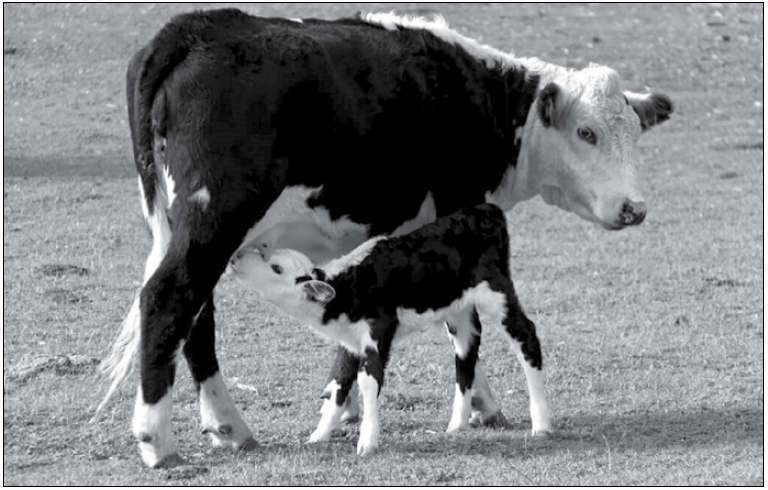Perspective
The Port of Olympia has participated in live animal transportation since 2015. Thanks to Clayton Agri-Marketing, cows have become the Port’s second most common export, behind timber, according to a Port spokesperson. The agri-business company’s February 2020 shipment, the sixth, moved more than 1,400 pregnant dairy cows from California and Idaho on their way to Vietnam.

The milk business in Vietnam is booming
The US Department of Agriculture inspects all of the cows and the conditions on the ship before they leave Port. According to Tony Clayton, his company takes good care of the animals: “They’ve got fresh water, they’ve got good bedding, they’re going to be comfortable.” Clayton said that while the American dairy market is struggling, thanks to milk alternatives, business is booming in Vietnam.
This rosy description is at odds with the reality of shipping live animals. There are several reasons to prohibit live export:
The majority of developing-world countries lack control posts to rest animals for 24 hours.
It is impossible to trace the animals’ journey, especially by sea.
There is no information available to assess whether the importing countries’ infrastructure and handling practices comply with our legislation.
Enforcement of animal welfare regulations is difficult even within our country, but once the animals enter developing-world countries, it is virtually impossible to monitor compliance or guarantee the animals’ welfare. For over 20 years, journalists and official sources have been reporting on systematic violations and inhumane slaughter practices in developing-world countries.
Live export constitutes a crime against animals
Hundreds of thousands of animals die en route during live export journeys. Many animals do not eat because of stress, and many suffer from seasickness, just like humans. Animals who survive arrive at their destination encrusted with urine and feces. Those who die during the journey die from extreme temperatures, septicemia, acute pneumonia and other horrible conditions. A significant number arrive blinded by sea salt and the filthy conditions they are kept in. Many former on-board veterinarians now condemn animal welfare conditions on live export ships.
Animal investigators have collected footage that shows cattle being slaughtered around the world with practices that violate standard animal welfare laws. Videos show absolute chaos, with animals being dragged, beaten, having their throats cut with blunt knives and being thrown into mass graves. Some of them are still alive hours later and die in agony. Australian Livestock Exporters Council Chief Executive Alison Penfold said she was “distraught and disgusted” by the footage. Australian Agriculture Minister Joe Ludwig described it as “sickening.” Live exports from some countries have been suspended indefinitely.
Live export ships can break down before arriving at their destination. Often, these ships are towed back to their original port, where they can sit in dock for weeks before the decision is made to unload the animals. In the meantime, the animals aboard are dying because of extreme temperatures or diseases caused by viruses and stress.
An environmental hazard
If the suffering of millions of animals on live export ships every year isn’t a good enough reason to support a ban, a new case study by PETA Australia should be. Focusing on the environmental impact of the live export industry, this detailed report reveals that the live export trade is among the top 40 CO2 emitters in Australia. It is calculated that bringing this industry to an end would be the equivalent of removing 320,000 cars from Australia’s roads. That’s approximately 2 % of all the vehicles in Australia.
From the moment animals leave the farm, a path of environmental destruction is carved. Cattle and sheep may be transported thousands of kilometers by truck as the empty ships journey back to their home countries to collect their next cargo. The entire process racks up a high level of CO2 emissions.
Assuming one million head of cattle a year, 20 kilograms (44 pounds) of excrement per head per day, an average voyage time of 10 days, and vessel loading and unloading times of five days, something on the order of 300,000 tons of excrement is pumped into the sea during these voyages each year. A similar calculation for sheep, voyaging more typically for 20 days, would add a further 85,000 tons.
A human hazard
Based on death rates for 2015, Australian live export voyages would have resulted in approximately 12,500 sheep and 1,300 cattle carcasses being disposed of at sea ( The Maritime Executive, 11/5/2016). Rules regarding how and where carcasses can be disposed state that no carcass is to be disposed of within 100 nautical miles of the nearest land unless it has been passed through a grinder or has been slit to open the thoracic and abdominal cavities. According to journalists and witnesses, ship’s officers are not aware of when crew members are throwing carcasses overboard.
In addition to environmental costs and the hazards to humans, when we talk about live export, we are talking about living beings who are being terrorized, treated like garbage and eventually brutally killed. Would you allow this to happen to your dogs or cats, or any pets you have at home? If not, why would you allow it to happen to other innocent animals?
When you support live export, you support terror and suffering. There is no amount of money that can justify this horrific treatment of our fellow sentient beings. Federal law prohibits cruelty to domestic animals. They should be extended to prohibit extreme cruelty in the treatment of farm animals. Please support a ban on live export. It’s not necessary, and it is animal cruelty.
Maria Protis is a former Civil Engineering Assistant at Seattle City Light.

Be First to Comment